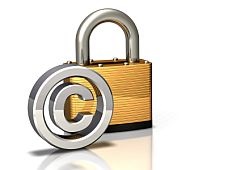Identifying the Owner of a Web Site
A practical problem if a copyright is being infringed on the Web, or a site is defaming someone, is to identify the true owner of the Web site so that a formal “cease and desist” demand can be directed to them, or other legal action taken. Identifying a Web site owner can be done in a variety of ways, some easier than others. Start with the Web site itself.
Using Information on a Web Site Itself to Identify the Owner
The easiest and most obvious method, but one commonly overlooked, is to look for clues on the Web site itself as to the ownership. An “About Us” or “Contact Us” page may be buried somewhere inconspicuous, for example. Look for a sitemap that might reveal a link to these pages, or try the site’s search tool, if it has one. In some cases, just manually typing www.example.com/about-us or www.example.com/contact can reveal a hidden page with identifying information.
Checking the Domain Registration to Identify a Web Site Owner
For a Web site or blog that has its own domain name, such as www.example.com, it is often possible to get detailed information about the person or company that registered the domain name by checking the domain registration database. This is commonly referred to as a “WHOIS” search. There are a number of free services for checking domain registrations, such as the one operated by Network Solutions. This type of search will not be helpful if the owner has used “private registration” — a method of cloaking the identity of the true owner.
The registration information should also give the identity of the company that is hosting the Web site. Often, this is the only way to track down the owner’s identity, because the hosting company is usually easier to locate.
Getting Owner Information from a Hosting Service
For a Web site or blog that is hosted by another company, the address will look like these examples:
http://example.blogspot.com
http://www.geocities.com/example
http://www.angelfire.com/example/example
In these situations, you will need to contact the hosting service to get information on the owner of the pages in questions. They are under no legal obligation to provide this information unless served with formal legal papers, however. In 2008, for example, Google was ordered by a court in India to disclose the identity of an anonymous blogger accused of defaming a construction company.
Using a Secure Site’s Digital Certificate to identify the Owner
For secure Web sites, use your browser to check the site’s digital certificate. This only works on secure Web sites, such as those beginning “https://…”, because non-secure sites do not need digital certificates.
- Finding the digital certificate depends on your browser:
- Internet Explorer: In the browser’s toolbar, click Page >> Security Report
- Firefox: In the browser’s toolbar, click Tools >> Page Info >> Security
- In the pop-up window that appears, click “View Certificates.” You should see a certificate appear in another pop-up window.
- Click the “Details” tab.
- Click on “Issuer.” The certificate should now display details about the certification authority that issued the certificate (below, left)
- Click on “Subject.” The certificate should now display details about the entity that was issued the certificate, including an address (below, right).{footnote}Thanks to Edwin Aldridge for his detailed report on this method.{/footnote}


